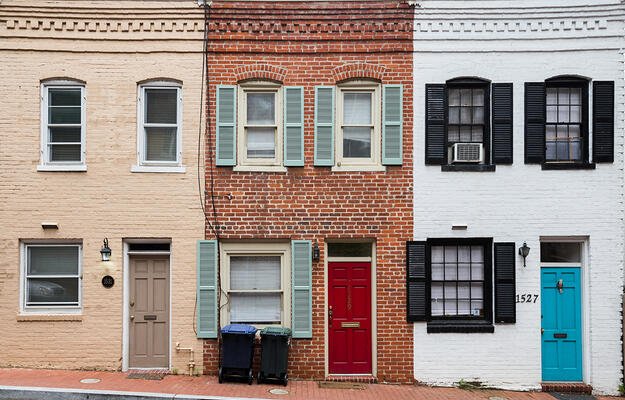
(Marek Masik/Shutterstock)
Can Community Land Trusts Help Maintain Affordability in Gentrifying Urban Areas?
- Title:
-
Community Land Trusts for Sustainably Affordable Rental Housing Redevelopment: A Case Study of Rolland Curtis Gardens in Los Angeles
- Author:
-
Annette M. Kim and Andrew Eisenlohr
- Source:
- Publication Date:
-
2022
Since the 1980s, US affordable housing policy has relied on federally subsidized affordable housing programs, including Section 8 and the Low-Income Housing Tax Credit that incentivize private developers to build affordable housing units through steep subsidies and tax credits. These programs have affordability covenants, which can expire, meaning developers can raise rents above market rate, displacing current residents.
Community advocates and local governments are increasingly exploring community land trusts (CLTs) to secure affordable housing and protect households with low incomes from displacement. CLTs are independent structures (often nonprofits) that hold and steward land to make it permanently affordable. CLTs purchase land and hold it in a trust, then make available properties on the land for either purchase or rent.
In this narrative report, researchers synthesize strategies used in a partnership between a CLT and an affordable housing development that transformed 48 units of Section 8–funded apartments with expiring affordability covenants into 140 units of housing that will be affordable in perpetuity in a gentrifying urban area. They focused on Rolland Curtis Gardens (RCG) in Los Angeles, which was originally developed in 1981 with an affordability covenant that made the complex’s units affordable until January 2011. As the expiration date approached, RCG’s owner announced intent to convert the complex into market-rate housing to capitalize on the increasing housing values of the neighborhood. One month later, tenants received eviction notices, prompting advocacy from TRUST, a local community-based organization. Through a detailed narrative of development, this report documents the conversion of RCG into a CLT, focusing on the partnership between TRUST and Adobe Communities, a private housing developer.
Key findings
- The cost of developing the RCG CLT ($564,227 per unit) was comparable with private affordable housing projects in Los Angeles ($558,110 per unit). Because housing is becoming increasingly unaffordable relative to US incomes, the perpetual affordability of CLTs is a vital advantage.
- Because building housing in Los Angeles is more expensive than the national average, the authors suggest it is not financially sustainable for the city to continually lose affordable housing units when covenants expire (and inevitably, some are put on the market). Though upfront costs are comparable, shared equity housing that is perpetually affordable eliminates the need to spend money to build new developments to replace formerly affordable units.
- When transitioning existing affordable housing into a CLT, it’s vital that the CLT partner with an affordable housing developer who can use their financial expertise to manage the entitlement and development processes. However, these partnerships may be difficult to form in many cities because the benefit of the CLT model, sustainable affordability, will not incentivize most developers.
- Even these kinds of CLTs face difficulty providing housing for residents with very low incomes in high-rent areas in a market economy. Because converting a building requires private-market funding for both construction and loans, tenant rent is set at a level that can repay the loans. While in this case, the CLT was able to budget the project to assure that the number of previous households who were displaced during construction were able to return to units with rents at 30 percent of the Area Median Income (AMI) RCG CLT’s minimum tenant-income requirement for the other units is 40–60 percent the AMI, an unaffordable threshold for households with the lowest incomes who don’t have Section 8 vouchers.
- Redeveloping affordable housing in gentrifying areas is difficult, given development costs, neighborhood opposition, and a shortage of temporary relocation housing.
Policy and practice implications
- To incentivize greater developer participation, local policymakers can investigate adjusting the appraisal methodology for properties in rapidly appreciating real estate markets. This could facilitate the movement of more appropriate levels of public funds to affordable housing projects in gentrifying neighborhoods.
- To accelerate redevelopment, cities could increase allowable density, floor-area ratio, and building heights of CLTs in environmental review requirements (and could explore expanding affordable by-right development).
- The authors recommend that policymakers stop directing public funds toward affordable housing projects that have expiration dates on affordability and instead develop and invest in models that are sustainable in perpetuity.
- To move the CLT model beyond niche examples, the federal government could fund a grant program for CLT site acquisitions.


